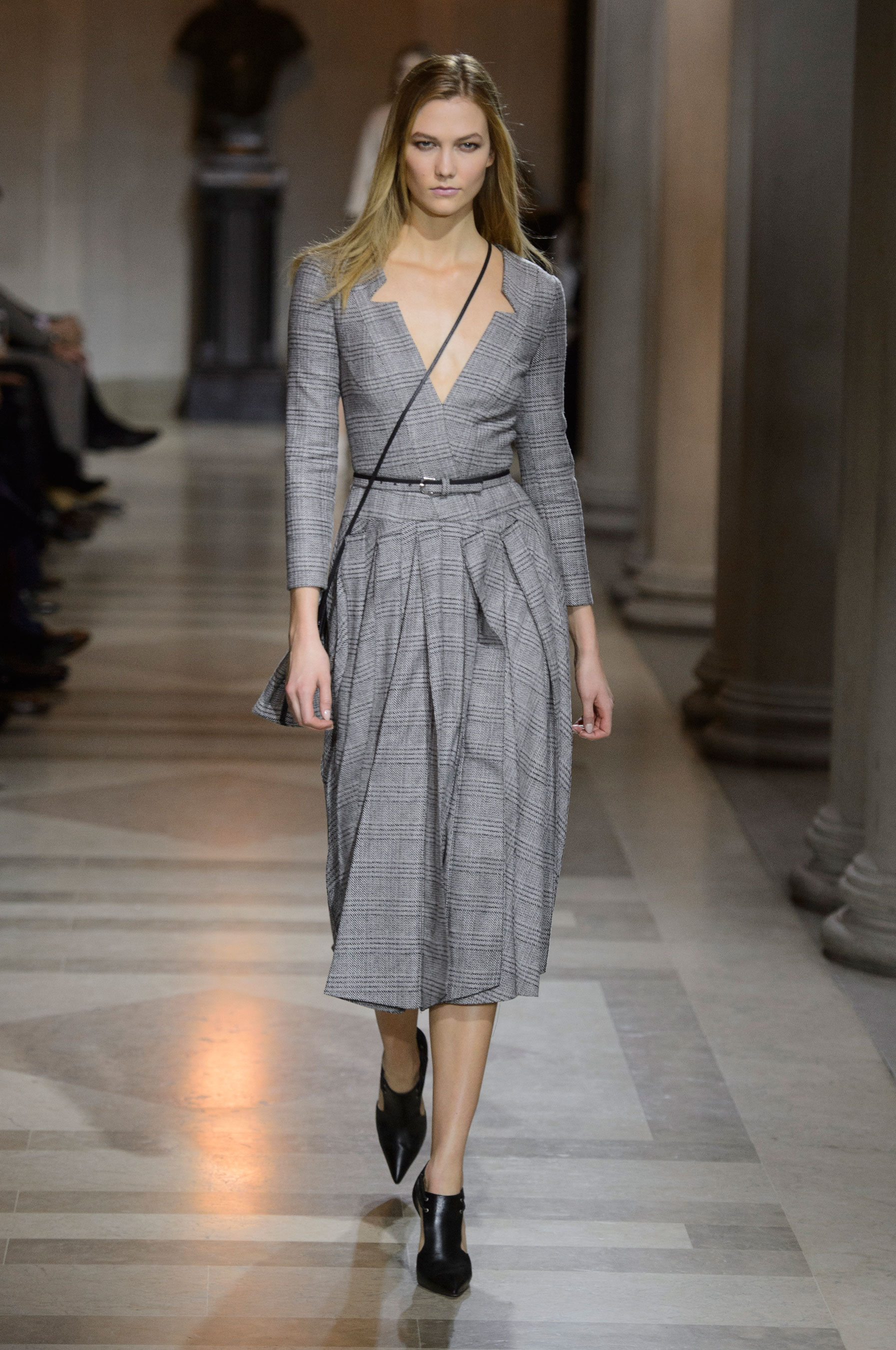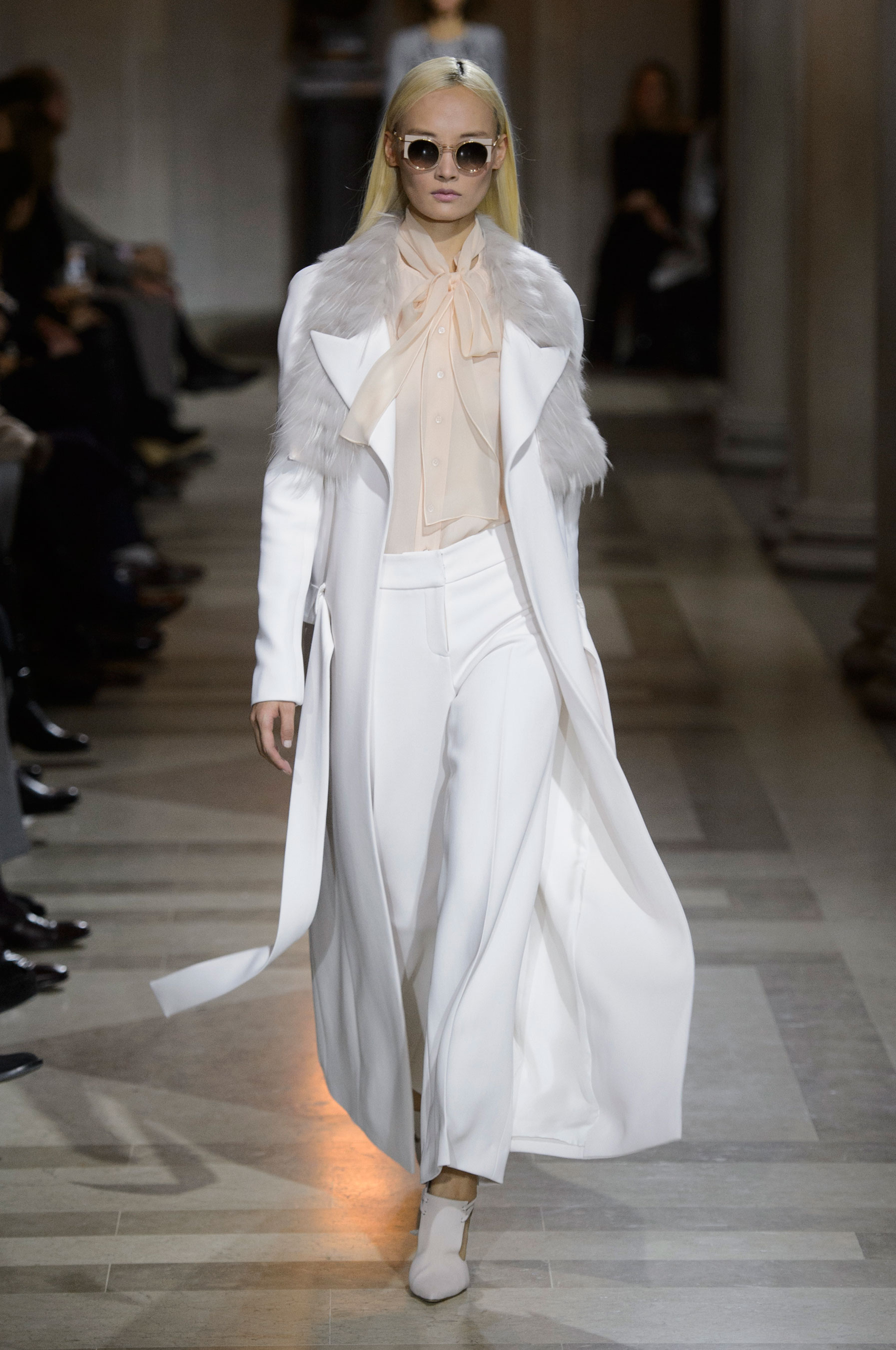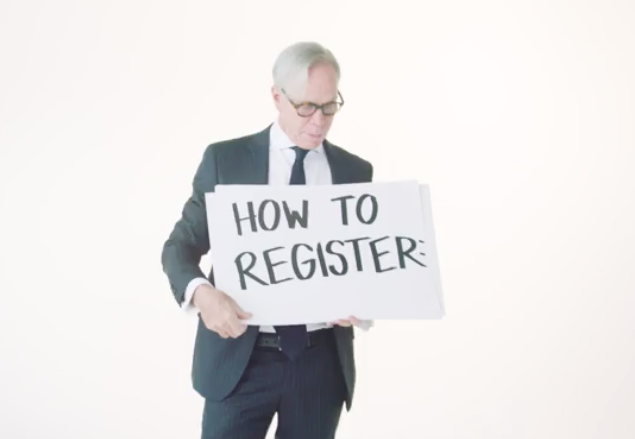Carolina Herrera, The Tastemaker
September 10, 2016
Marc Karimzadeh


In three-and-a-half decades, Carolina Herrera has come represent all that is elegant in New York. She embraced art and photography, and was embraced by Mapplethorpe and Warhol. Herrera also encouraged emerging fashion talents, paving the path for the future of American fashion. For her 35th anniversary, she talks to CFDA’s Marc Karimzadeh about past, present and future.



Thank you so much for taking the time to sit down with me. This year marks the 15th anniversary of the Sept.11 attacks, which happened during the September shows, and, in a way, reshaped New York Fashion, which you played an instrumental role in. Let’s begin by talking about young designers and your interest in young designers.
I am a great believer in helping young designers. I have always had an interest in young designers because there is a lot of talent with a good eye, and sometimes they need direction as far as where to go, as everybody does. It started 15 years ago. I opened my showroom after 9/11 with Vogue and had 11 designers show here.
How do you look back on that time and what do you remember the most about Sept.11 and how it impacted fashion?
It was the most shocking. I was in my house, watching television, having breakfast in bed. I saw when the plane hit. We didn’t know what was going on; it was all very confusing. You didn’t expect something like it here. It was a very sad moment for everyone.
It changed everything, for New York and for America and the world.
Everything was changed because of that act of terrorism. You could see the fear. Traveling became different and more difficult with security. But I also saw something beautiful in the way how everybody in New York came together to help.
Of course, it also affected fashion. It happened during the shows. All the young designers had everything planned, and they had spent a lot of money putting their collections together. But then they didn’t have a place to go. That’s how they ended up here.
How did the showcase for young designers come about at the time?
It ended up here; I don’t remember how we did it. Anna called me. We have a very good relationship and I believe in everything she does because she is a good leader. I liked the idea, and so I said, ‘Of course. You can have everything you want.’ The designers were so excited. I remember I didn’t sit in the front row. I wanted them to have this place for themselves, like I wasn’t here and the showroom was a place for them. The whole office was full of models and hairdressers and everyone seemed happy. Despite that shock, it did work.
That moment has done so much for American fashion. It led to the CFDA/Vogue Fashion Fund.
The Fund came together after people started thinking about how to help designers in another way. I was a mentor for Prabal Gurung as part of the CFDA/Vogue Fashion Fund, and I love Prabal. He does so well and is so talented and full of ideas, and I love to work with him.
Why is it so important to you to cultivate young designers? It’s probably fair to say that not every other designer shares this sentiment.
If you do well in something, and you have the facilities, why not share them? You have to share in life. You have to help, and I like to help those that I think have talent. It’s the future. I don’t look to the past.
How has the industry changed in these 15 years?
Like art, fashion changes and evolves. I started in 1981. The way people dress and the way the press projects fashion to the public is totally different now. For me, clothes are timeless. Sometimes, you hear someone who says, ‘You look lovely, where is that dress from?’ And it’s 18 years old. That’s why vintage dresses are so popular.
It’s really the individual who gives the clothes their style and who shows the way they should be worn. That’s part of my philosophy. The woman gives the fashion the personality. You have to believe in your own style and believe in wearing things that look good on you – not because they are necessarily in fashion. You don’t want to become a fashion victim.
We have talked about the last 15 and 35 years. Where do you see American fashion headed?
I wish I had a crystal ball to tell you. Fashion is a mystery. Fashion is magical. Fashion is a fantasy. Fashion is madness. Fashion is everything. How can I tell you what I see in 15 years? Maybe it will go back to the ‘Incroyables’ – that time in the 18th Century when people dressed in a different way. Maybe we will be so elegant and so incredibly dressed, the way we used to be.
Wouldn’t that be wonderful?
It would be wonderful, because I connect fashion with elegance. I don’t know many women who want to be admired because they look like clowns. They want to be admired because they look great.
That’s what seems to have changed so much. You started in 1981 and were in New York before; you saw Halston, Bill Blass and all the different talents of that time, and how people would dress.
That was really something else. That’s why I say things evolve in a different way. At one point, the length of skirts was something people used to ask you about all the time, because everybody had to have the same length. Now, the fun about fashion is that everything is accepted, everything can be done and shown.
That’s a good thing, but at the same time, there is something appealing about the strictness of trends. Back then, it brought about the elegance.
I don’t think the strictness will come back. Maybe in 15 years. Fashion has become big news. We didn’t have that before. We had newspapers. We had Women’s Wear and the New York Times. Now we have television, Instagram, Facebook, and the whole digital world that I find so fascinating. I love it because it’s a way to get the women who buy Herrera – the clients – involved in what we are doing. You can watch a show as it is going on. It’s fascinating.
The reach and exposure you can have is definitely fascinating, as long as you control the message.
You have to control it. But I believe in the digital world and that it’s the future of everything and especially fashion. Every magazine and every newspaper covers fashion. Everybody thinks they are all involved in the fashion world and that’s fascinating.
It’s fascinating although I sometimes yearn for those moments of privacy, of being able to just switch off and not know where everyone else is vacationing or eating or going on about their business.
For me, the real luxury is privacy. I don’t understand these people on Instagram who go to a restaurant and photograph the food. Why do people have to know what you’re eating? I don’t have a personal Instagram but we have the @HouseofHerrera Instagram. I am great believer that when it’s well-directed, it can become very important. People can see what the brand is all about.
Going back, we looked at the future of American fashion, we spoke of the past 15 years and prior, but I have to tell you: I love the photographs that Robert Mapplethorpe took of you. How did these photos come about?
My husband Reinaldo and I used to go to Barbados to see Oliver Messel, who was a fantastic English figure. He was Tony Snowdon’s uncle and the greatest designer of the theater and the ballet. We always stayed with him in Barbados. He was like family to me. One day, we were going to the Golden Party of Colin Tennant, the Lord Glenconner who used to own Mustique. And on the little plane from Barbados to Mustique was Colin’s sister, Anne Tennant, with Robert Mapplethorpe. He was flying there because he was in charge of taking all the photographs.
When we arrived in Mustique, we became friends, and he was adorable and we saw each other all the time. Suddenly, he said, ‘I am going to photograph you.’ I told him, ‘No, Robert, I am here on vacation and so are you.’ And he said, ‘I am working.’ He came back the next day and asked to photograph me again. He said, ‘If you don’t allow me to photograph you, you will regret it a lot, because I am going to be very famous and you are not going to have a photograph.’ And that was it—the first photo Robert took of me was in the hammock in Mustique. Then, he took a photo at the Golden Ball. He did a series of Reinaldo and me. We became really good friends. I took him to his first fashion show.
What was it like to be photographed by Mapplethorpe?
It was a friendship. He was very talented. All the photographs are textured. The series of flowers is so beautiful. We took the photograph with the hat and the pearls at the Mayfair Hotel on Park Avenue. Reinaldo helped Robert with the lights. It was fun. He knew exactly what we wanted. He did the last photo two months before he died. He called me and said, ‘I need to take a photograph of you now.’ I said, ‘Are you sure? I don’t have a hairdresser. I don’t have anything.’ He said, ‘Come as you are. Wet your hair.’ That’s why my hair is wet in the photo. He died too young.
You also posed for Andy Warhol.
Warhol was also a good friend. He was the King of Pop. I always think about Andy, because he was so amazing, and I remember how much he liked the business, the money and the fame. I always think that if he were still around, he would die again when he sees his paintings going for $80 million. Can you imagine?
At the time, did you think that Andy Warhol and Robert Mapplethorpe would have this incredible legacy?
No, not at the beginning of our friendship. I mean, Andy was already very established, but you didn’t see that then. I had a feeling that they were talented and great photographers. Andy and Robert would be amazed now. That picture of me with the hat and the pearls is at the National Gallery in Washington, D.C. permanently. When I went to the National Gallery [in 2015], I was so proud, because I was representing Robert.
When you look at those photos now, how do they make you feel?
I think about all the glamour and the fun, and the wonderful times. It was a time when everybody mixed. You’d go to a dinner and meet a writer, a painter, a sculptor, a politician. The places we used to go were mixed, too, and you’d see all the great designers, like Halston, Bill Blass, or Geoffrey Beene.
Obviously, you had places like Studio 54, which I know you have been to because there are the photographs to prove it.
I know. When I am interviewed, people think that I lived there. I used to go, but not every night.
Those photographs by Ron Galella or anyone at Studio 54 were so iconic, and we keep seeing the same photos, like Diane and Barry, Halston with Liza…
I have a great photo with Bianca. Steve Rubell was a very good friend. He was very funny. When I did my first collection at the Metropolitan Club, Steve arrived without a tie and they rejected him. So he went to Bergdorf’s and bought a tie and came back. That was funny.
Steve Rubell was refused at the door? That’s a classic! Shifting gears, how important is art and photography for you as a designer?
It’s very important. You get detail. I had a collection that was inspired by Jacques-Henri Lartigue and his photographs of women at the Riviera. You have to train your eye to look for beauty, and for a fashion designer, it is very important to show something that is agreeable to the eyes. Lartigue was an inspiration, Man Ray was an inspiration, and of course, Robert Mapplethorpe was. Years ago, I did a whole group of leather jackets, all inspired by what Robert was wearing, but I did them in velvet. Art is so important for me.
Do you go to museums a lot? What are your favorites?
I love the El Prado in Madrid. I go to Madrid often because my daughter Carolina lives there. The Metropolitan Museum here is one of my favorite museums. I love the Neue Galerie with the lovely Klimts. I love the Frick Collection, because it has one of my favorite paintings, Don Pedro, Duque de Osuna by Goya. Another one of my favorite paintings is at the Isabella Stewart Gardner Museum in Boston. It’s called El Jaleo by John Singer Sargent. They are dancing the Flamenco with beautiful movement. It’s very elegant.
Where do you see yourself five years from now?
I hope the business continues to grow a lot. It’s a very solid company. We have CH, and perfumes. I like how it has been so consistent, and I have great partners in Puig. You have to have perseverance and be open. If you want to change, it can never be a revolution, it can be an evolution. I love new technology and have been experimenting with new materials. I am not going to tell you that I am going to go in a totally new direction. That’s not good for clients. You cannot confuse people. You can’t ever pretend this company can become a contemporary brand. We are already established.
That’s a perfect statement to conclude our conversation. Thank you so much.
Previous

Register to vote, and VOTE
Next

NYFW on Paper